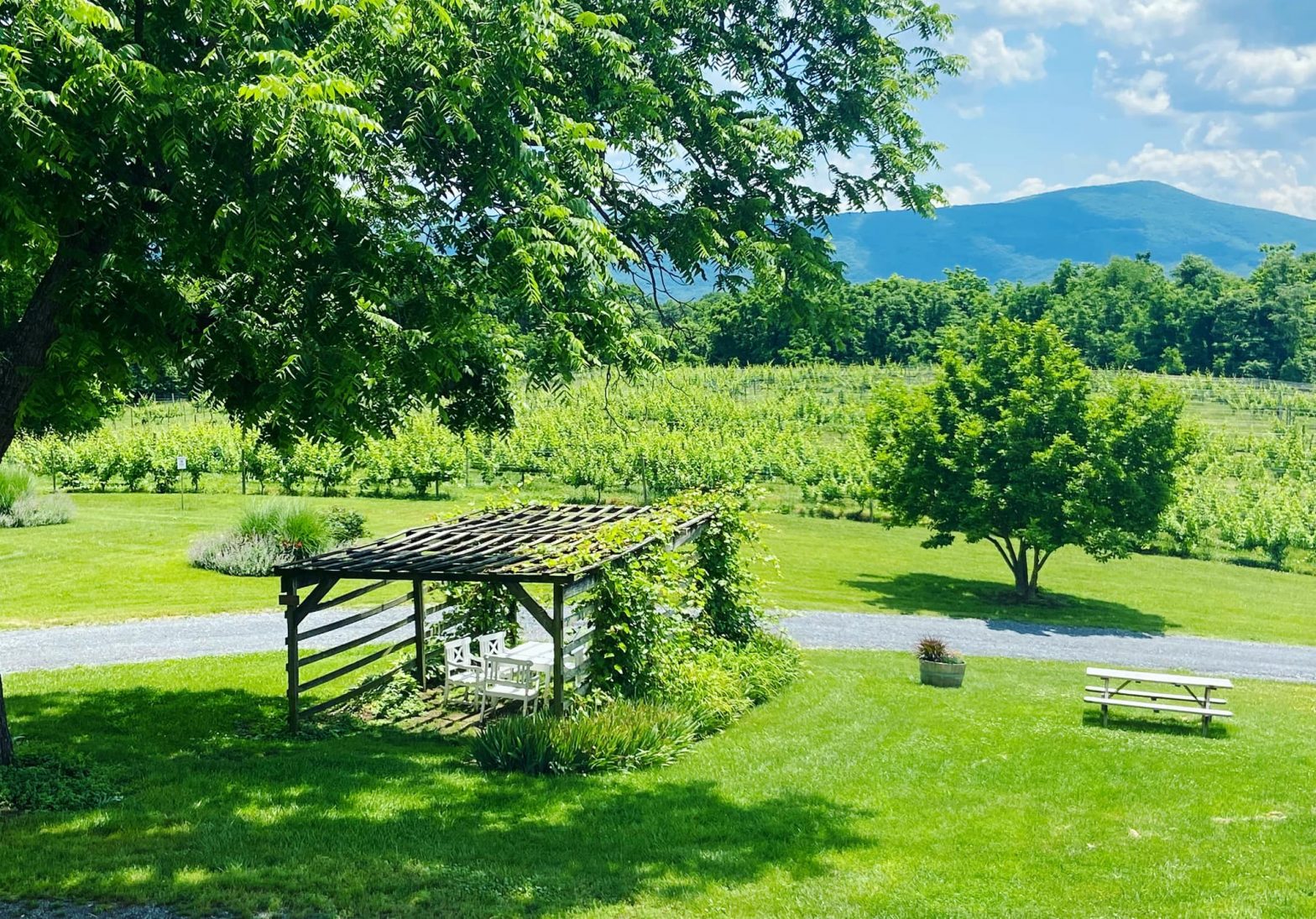As a founding father wine geek, Thomas Jefferson is typically the first person who springs to mind when discussing the history of our wine region. But it was Emma Randel who literally put Virginia wine on the map in 1982.
Largely due to the efforts of Randel, who recognized the importance of the area as a unique growing region, Shenandoah Valley AVA was the first AVA in the state. Randel and her husband, Jim, are considered some of the original visionaries of the Virginia wine industry, having founded Shenandoah Vineyards in 1976, the oldest winery in the valley and the second oldest in the state.
An American Viticultural Area is a federally recognized grape-growing region with defined boundaries. To achieve this, a region must show evidence of something distinctive and defining, such as climate or soil. Currently in Virginia, there are eight AVAs, a testament to the wide range of growing conditions that exist in the state, and the diversity that is possible in the local wine industry.
Area wine-lovers are likely most familiar with the Monticello AVA, with Charlottesville at the heart and center of the region. Many may not be as familiar with the Shenandoah Valley AVA (it borders the Monticello region to the west), and the wineries that are a short drive away. It’s a scenic, exciting area that’s worth exploring—and it plays a significant role in both the history and the future of the Virginia wine industry.
The Shenandoah Valley AVA is also the largest in the state, bounded on the eastern side by the Blue Ridge Mountains, on the western side by the Appalachian and Allegheny plateaus, and spreading north into West Virginia. The region features limestone soil, warm daytime temperatures combined with cooler nights, an almost constant breeze, and much lower average rainfall than any other location in Virginia. Drier conditions, due to a “rain shadow” that exists between the Allegheny and Blue Ridge Mountains, help with the challenges of mold and mildew in growing grapes locally, and allows the production of high-quality grapes with less vineyard spraying.
The result of this climate is wine higher in acidity and slightly lower in alcohol that often taste brighter, livelier, and leaner on the palate. This parallels the evolution of consumer preferences, as a younger generation seeks lower-alcohol, lighter-bodied, easier-drinking wines that don’t require years of aging. There is also value to be found here, as increased distance from major cities and lower production costs result in high-quality wines at relatively low prices.
Many Virginia wineries not located in the Shenandoah Valley are sourcing fruit from the region because of these characteristics. It’s a trend that isn’t going away. There is growing demand for vineyards and land to plant future vineyards.
So, look to grapes grown just to the west for fantastic wine to drink now—and even better wine to come. It’s clear that the Shenandoah Valley not only has a historically important place in Virginia wine, but also a promising future.
Go West and wine yourself
Wineries in the Shenandoah Valley AVA stretch from as far north as Winchester to just south of Roanoke. Those on the northern end make for a nice day trip from northern Virginia/Washington DC. Below is a list of wineries a short drive from Charlottesville.
Barren Ridge Vineyards Opened in 2008 and located at the family’s former apple orchard, Barren Ridge has amazing views west toward the Allegheny mountains. Don’t miss the 2015 Meritage, winner of a Governor’s Cup Gold Medal.
Ox-Eye Vineyards The tasting room is in the historic Wharf District of Staunton, and all the grapes are grown on the family farm in Augusta County. Well known for its riesling, the winery also features interesting grape varieties such as lemberger and grüner veltiner.
Rockbridge Vineyard & Brewery Owners Shepherd Rouse and Jane Millott-Rouse started planting in 1988, and in 2022 Rouse was named Grower of the Year by the Virginia Vineyards Association. Seek out the 2018 V d’Or dessert wine, included in the 2022 Governor’s Cup Case.
Brix & Columns Vineyard Owners Steve and Stephanie Pence began planting vines in 2015, and continue to expand their estate vineyards. The tasting room features mountain views, and is presided over by Wyatt, a black and white Great Dane who acts as unofficial greeter. Try the 2019 Chardonnay, which balances a full body with bright fruit flavor.
Bluestone Vineyard Family owned and operated, the vineyard was started in 2008, and its name comes from the local slang for limestone, which can be seen at various places on the property. Winemaker Lee Hartman is focused on wine that truly reflects the Shenandoah Valley. His 2017 Houndstooth red blend won both a Governor’s Cup Gold Medal and the 2021 Shenandoah Cup.
Jump Mountain Vineyard About a 75-minute drive from Charlottesville, Jump Mountain requires reservations and is open only on weekends. Some lesser-seen grapes are grown here including refosco, lagrein, and sagrantino. The core wine is cabernet sauvignon, which doesn’t always flourish locally, but good vineyard site selection appears to have made all the difference. The 2017 bottling impresses with structure and flavors characteristic of the variety.
